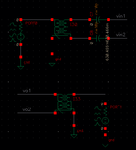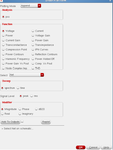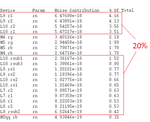Ata_sa16
Full Member level 6
- Joined
- Mar 29, 2016
- Messages
- 343
- Helped
- 59
- Reputation
- 118
- Reaction score
- 58
- Trophy points
- 28
- Location
- Milky Way Galaxy, 179° 56′ 39.4″
- Activity points
- 2,221
Hi guys,
I have designed the single ended CS LNA and it is working properly,
However when I simulate the differential one with (Ls2 =Ls1/2). It shows totally wrong answers.
I used Ideal_Balun but i get NF of 14dB which is impossible ! I cannot understand what is my fault here !



There should be something wrong with Baluns since those results are impossible !
- - - Updated - - -
OH! I found the problem myself finally ! In the output Balun the outputs and port 2 are placed in wrong sides !!!!
- - - Updated - - -
After correcting the Balun I get this results Do you think it is ok ?

NF is 2.7 ! generally the noise figure of differential LNA is lower than single ended.
Do u think baluns add noise to circuit? I do not have any idea. Baluns are ideal ones !
I have designed the single ended CS LNA and it is working properly,
However when I simulate the differential one with (Ls2 =Ls1/2). It shows totally wrong answers.
I used Ideal_Balun but i get NF of 14dB which is impossible ! I cannot understand what is my fault here !



There should be something wrong with Baluns since those results are impossible !
- - - Updated - - -
OH! I found the problem myself finally ! In the output Balun the outputs and port 2 are placed in wrong sides !!!!
- - - Updated - - -
After correcting the Balun I get this results Do you think it is ok ?

NF is 2.7 ! generally the noise figure of differential LNA is lower than single ended.
Do u think baluns add noise to circuit? I do not have any idea. Baluns are ideal ones !

